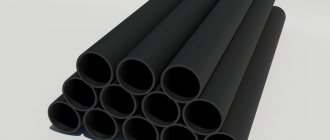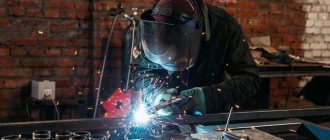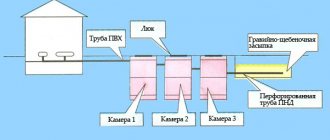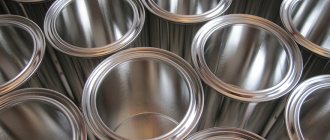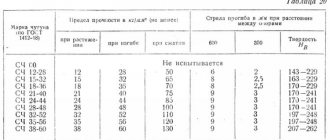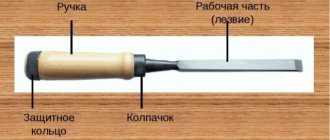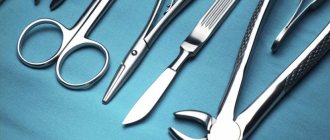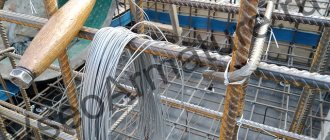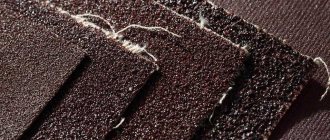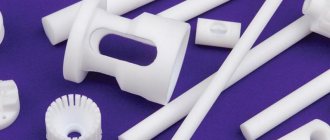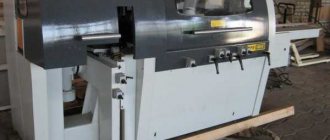Rolled metal - classification, range, advantages and disadvantages
08.12.2020
- from Site Administrator
Rolled metal is a product obtained by processing metal blanks in rolling mills. After passing through rollers, processing by rolling, pressure, and stretching, products with a given cross-sectional shape are obtained.
Channels
A distinctive feature of channels is their P-shaped cross-section. They are made mainly of steel, but other metals can also be used. Channels have excellent load-bearing properties, which is why they strengthen structures and significantly increase their service life. Such products are durable and little susceptible to rust.
There can be a lot of classifications of channels. So, according to the production method they can be:
hot rolled (in them an angle is formed between the shelves and the wall);
bent (with a rounded bend).
Classification
Rolled metal products are classified according to:
- Composition – black (low-carbon steel), stainless (stainless steel), non-ferrous (aluminum, copper, other non-ferrous metals and their alloys). The most widespread is ferrous metal.
- Production technologies – cold and hot rolled. Hot-rolled metal products are cheaper and therefore are in great demand. Cold-rolled metal products have better characteristics and greater geometric dimensional accuracy.
- Quality of surface treatment – matte, mirror, polished, calibrated.
- Types of products – rolled pipes, sheets, shaped, long products.
- Profile size – small, medium, large.
Sheet metal
According to the manufacturing method, it is divided into hot-rolled and cold-drawn. It is used for the manufacture of various prefabricated and welded metal structures used in industrial production and construction.
Carbon and low-alloy steels are used to produce both cold-drawn and hot-rolled sheets.
Certain types of sheet metal include:
- metal tape;
- tin;
- corrugated and expanded metal sheets (PVL), used for special purposes. For example, PVL sheets are used for the manufacture of various floorings and fences https://www.rostov.spk.ru/listovoy-prokat/.
Range and application
Sheet metal products include steel strip, sheet, and coiled steel. Sheet steel is used to make containers, reservoirs, mechanism housings, car bodies, corrugated sheets, metal tiles, and stamped products.
The range of shaped metal products includes:
- Channel is a U-shaped beam. Application – production of floor beams, reinforcement of walls and ceilings, production of car frames, cabins, car frames and power plants.
- An I-beam is an H-shaped beam. Application – construction of hangars, multi-storey buildings, underground structures, bridges, overpasses, production of powerful machines and mechanisms, construction of crane tracks.
- Corner - L-shaped profile. It is used in mechanical engineering, for the manufacture of metal structures, farms, greenhouses, shelving, billboards, and fences.
- Rails – construction of railways, construction of crane tracks.
The composition of rolled metal products includes:
- Square - square-section rods are used for the manufacture of fences, gratings, artistic forging, and are used in mechanical engineering and machine tool building. A square of tool steel is used to make cutters.
- Circle - a round profile is used for the manufacture of shafts, anchor bolts, fences, studs, various parts on lathes,
- Hexagon - hexagonal rods serve as blanks for the manufacture of bolts and nuts; they are used to make fences and forged parts.
- Reinforcement – rods of round or aperiodic profile. The main purpose is to reinforce reinforced concrete structures.
- Wire is a long rod or thread of round cross-section. Application – binding of reinforcement, packaging of products, production of nails, locking parts, consumer goods, laying of power lines, production of ropes.
Pipe products include round and profile pipes. Round pipes are intended for laying pipelines, profile pipes are intended for the manufacture of metal structures.
Main types of metal products for construction
The main types of metal products used in construction are:
— assortment of rolled metal and metal products
: a) grade steel (round, square, strip); b) sheet steel (including roofing - black and galvanized); c) profile (angle profiles, channels, T-beams, I-beams, rails, pipes and other shaped profiles);
— stamped and bent profiles
(more economical than hot-rolled products);
— forgings
(bolts, staples, anchors);
— wire, rods
(obtained by rolling or drawing);
— reinforcement products
(rod and wire reinforcement, embedded parts).
Bar reinforcement
happens
:
a) hot-rolled - smooth class A240 (former designation A-I), periodic profile classes A300 (A-II) ... A1000 (A-VI); the number in the class designation indicates the yield strength of the reinforcing steel in megapascals; b) thermally and thermomechanically strengthened - periodic profile classes At400 (At-III) ... At1200 (At-VII).
Wire reinforcement
there are: a) cold-drawn wire - ordinary (smooth class B-I and periodic profile class BP-I), high-strength (smooth class B-II and periodic profile class BP-II); b) reinforcing ropes - spiral seven-wire class K-7 and nineteen-wire class K-19.
For embedded parts and connecting plates
As a rule, rolled carbon steel of the appropriate grades is used.
Protection of metals from corrosion
There are chemical and electrochemical corrosion of metals. Chemical
corrosion occurs as a result of oxidation or reduction processes occurring under the influence of the external environment (gaseous or liquid non-electrolytes - oil, gasoline, kerosene).
Electrochemical
corrosion is the most common type of metal corrosion. It occurs when metals interact with electrolyte ions and consists of the transfer of ions from one metal layer to another, as well as into a gaseous or aqueous medium. When dissimilar metals come into contact, the more electronegative metal is destroyed. For example, when zinc comes into contact with iron, zinc is destroyed. Metal under load undergoes corrosion much faster than unloaded metal, since the integrity of the protective film is damaged and microcracks form.
Alloying is used to protect metal from corrosion.
(stainless steels are obtained by introducing alloying additives up to 20%) and
protective coatings.
The latter are used: a) metal films, which represent mechanical (passive) protection, i.e. cathodic coating - coating with a metal that is more electropositive than the main one, or electrochemical (active) protection, i.e. anodic coating - coating with a metal that is more electronegative than the base; b) oxide films obtained by oxidation (bluing); c) paint and varnish coatings. To protect against corrosion, bathtubs, sinks, and decorative items are coated with enamel, i.e. various combinations of silicates (quartz, feldspar, borax, clay, etc.) are fused onto the metal at 750-800 °C.
MATERIALS AND WOOD PRODUCTS
General information
Wood is the part of a tree trunk freed from bark that has a layered fibrous structure.
. Wood has a number of valuable properties: low density, high strength, low thermal conductivity, flexibility and elasticity, and a high coefficient of structural quality. However, when using wood in construction, it is necessary to take into account such disadvantages of this material, depending on its structure and composition, as heterogeneity of properties in volume and direction (anisotropy), hygroscopicity, which leads to changes in size, warping and cracking, rotting in wet conditions and combustibility.
The structure of wood. The end section of a tree trunk shows bark, cambium and wood. Bark
consists of an outer skin, a cork layer underneath and an inner layer -
bast
, which conducts nutrients along the tree trunk.
The cambium
, located beneath the phloem, is a thin layer of living cells capable of dividing and growing.
The wood
is the main part of the trunk and is found under the cambium layer.
Wood consists of annual layers
.
Each annual layer is represented by early and late wood. Early
wood is formed in spring and early summer,
late wood
- in summer and early autumn. Late wood is denser and stronger than early wood.
In the end section of wood, one can distinguish the pith, heartwood and sapwood. Core
- loose primary tissue, which has low strength and rots easily.
Kernel
, or mature wood, is the inner part of a tree trunk, consisting of dead cells.
The core is dark in color and has greater strength and resistance to decay compared to sapwood. Sapwood
consists of living cells, has a higher moisture content, rots easily, and due to large shrinkage it increases warping of lumber.
Tree species are divided: 1) into sound ones, having a core and sapwood (oak, ash, pine, larch, cedar, etc.); 2) mature wood, having mature wood (it does not differ in color from sapwood) and sapwood (spruce, fir, aspen, beech, etc.); 3) sapwood, which lacks a core (birch, maple, alder, linden).
Microstructure
wood contains various types of cells.
The cell membrane (wall) consists of 99% organic compounds, the most important of which are cellulose and lignin. Lignin
cellulose
together .
Wood contains capillaries and pores of various sizes. Wood contains moisture of various types: chemically bound, bound by molecular forces or hygroscopic, capillary and free. Large
pores and
capillaries
are filled with water when wood comes into direct contact with water.
Thin pores and capillaries
are filled with moisture from the air during hygroscopic humidification.
Main coniferous wood species . Pine
- a soundwood species in which the core is brown-red in color and the sapwood is yellow. Pine wood is light (average density 470-540 kg/m3), easy to process, and quite durable.
Spruce
The quality of wood is inferior to pine, it has mature wood of white-yellow color, less resinous and lighter (density 440-500 kg/m3) with a large number of knots.
Larch
has a reddish-brown core; its wood is dense (density 630-790 kg/m3), hard, durable, and less susceptible to rotting than pine. It is used in hydraulic engineering, for the construction of bridges, and sleepers are made from it.
Cedar
has soft, lightweight wood that has lower mechanical properties than pine. It is used to make lumber, joinery, and decorative plywood for furniture.
Fir
The wood is similar to spruce, but does not have resin ducts and rots easily, so it is not used in wet operating conditions.
Main hardwood species. Oak
has dense (about 720 kg/m3), very durable and hard wood. The heartwood of the oak is dark brown, the sapwood is yellow, and the cut of the wood has large pith rays. Oak is used in critical structures of hydraulic structures, bridge construction, and for the manufacture of parquet and furniture.
Ash
has heavy, flexible and ductile wood, but less durable than oak. Thanks to its beautiful texture, it is valued in furniture production and carpentry and finishing work.
Birch
- a common sapwood species, has heavy (about 650 kg/m3) wood that easily rots in wet conditions. Used for the manufacture of plywood, carpentry and finishing materials (including imitation of valuable wood species).
Beech
- a mature wood species with heavy and hard wood that splits easily and rots relatively easily. Used for the production of parquet, furniture, plywood.
Hornbeam
has wood similar to beech, but heavier. Used for the same purposes as beech.
Aspen
- sapwood with soft and light wood (420-500 kg/m3), prone to decay. Serves as a raw material for the production of plywood and wood boards.
Alder
- sapwood with soft wood prone to rotting. Like birch, it is used to make plywood.
Linden
- mature wood softwood. Used for making plywood, furniture, containers.
Properties of wood
The properties of wood are divided into physical and mechanical. The presence of certain defects in the wood and its resistance to decay are also important.
Physical properties of wood. The main physical properties of wood include humidity, shrinkage, swelling, true and average density, porosity, thermal conductivity, etc.
Wood, having a fibrous structure and high porosity (55 - 65%), has a large internal surface that easily adsorbs moisture from the air. When temperature and humidity operating conditions change, wood easily absorbs and releases moisture, which affects its moisture content. The humidity corresponding to the limiting content of moisture bound by molecular forces in the absence of it in a free state is called the hygroscopic limit of wood or the fiber saturation point.
The hygroscopicity limit of wood is on average 30%.
Humidity affects all physical and mechanical properties of wood (an increase in humidity leads, for example, to an increase in electrical conductivity, an increase in size, and a decrease in strength). Depending on the humidity, wood is divided into: wet
, which has been in water for a long time, with a humidity above 100%;
freshly cut
, humidity 50 - 100%,
air-dry
, stored in air for a long time, humidity 15 - 20%;
room-dry
, humidity 8 - 12% and
absolutely dry
, humidity about 0%.
The moisture content of wood that is kept at constant temperature and humidity conditions for a long time is called equilibrium
.
To obtain comparable data on the physical and mechanical properties of wood, depending on humidity, the concept of standard wood moisture
, the value of which is set equal to 12%.
Shrinkage and swelling
changes in wood occur when its moisture content changes. There are linear and volumetric shrinkage. Linear shrinkage across the fibers is determined in two directions - tangential and radial. Shrinkage in the radial direction is 3-6%, in the tangential direction - 1.5-2 times more than in the radial direction. Shrinkage along the fibers is not determined due to its insignificant value. Volumetric shrinkage averages 12-15%. Shrinkage and swelling occur within the limits of hygroscopicity (0-30%), while the physical and mechanical properties of wood also change (deteriorate). An increase in humidity above 30% has almost no effect on the properties of wood; its volume does not increase due to swelling.
True Density
wood matter of all species is approximately the same and amounts to 1.54 g/cm3.
The average density
varies from 380 kg/m3 (Siberian fir) to 1110 kg/m3 (pistachio kernel). To convert the density of wood with a moisture content of up to 30% to the density at standard humidity, use the formula
,
where is the average density of wood at standard humidity, g/cm3; – average density of wood at a given humidity, g/cm3; k
0 – volumetric shrinkage coefficient, %;
W
– sample humidity, %.
If the volumetric shrinkage coefficient k
0 was not determined, then when recalculating the density to standard moisture content for birch, beech and larch wood, its value is taken equal to 0.6, and for other species - 0.5.
Thermal conductivity
wood, due to its high porosity, is generally low, while the thermal conductivity along the fibers is much greater than across it. For example, the thermal conductivity of pine along the fibers is 0.35 W/(m °C), and across the fibers – 0.17 W/(m °C).
Wood is a flammable material with an ignition temperature of 238-255 °C.
Mechanical properties of wood. The mechanical properties of wood are characterized by compressive strength limits (along and across the fibers), tensile strength, static bending and chipping, and elastic moduli. When testing for strength, samples, as a rule, must have normalized humidity (equilibrium humidity in an environment with a temperature of (20±2) °C and relative air humidity (65±2)%). To do this, before testing, the samples are conditioned at the specified environmental parameters until the wood acquires normalized moisture content. At the same time, the current standard allows testing on samples that have not been conditioned, with humidity different from normal.
The compressive strength along the fibers of conditioned samples is recalculated to a standard humidity of 12% with an error of up to 0.5 MPa according to the formulas:
– for samples with humidity less than the hygroscopic limit (30%)
,
where is the compressive strength of the sample at standard humidity, MPa; – ultimate compressive strength of the sample with humidity W
at the time of testing, MPa;
a
– correction factor equal to 0.04;
W
– sample humidity at the time of testing, %;
– for samples with humidity equal to or greater than the hygroscopic limit,
,
where is the conversion factor at a humidity of 30%, equal to 0.550 - for oak, linden, alder; 0.450 – beech, pine; 0.445 – spruce, aspen, fir, poplar; 0.400 – birch and larch.
Compressive strength of wood across the grain
4-6 times less than the compressive strength along the fibers.
Strength limit of wood under static bending
at a given humidity (in MPa) is determined on samples in the shape of a rectangular prism with a cross section of 20´20 mm and a length along the fibers of 300 mm according to the formula
,
where is the maximum breaking load applied at the center of the sample, N; l
– distance between supports, mm;
b
and
h
– width and height of the sample, mm.
Conversion of the tensile strength of wood during static bending to standard moisture content is carried out in the same way as for the tensile strength during compression.
Tensile strength of wood when chipped along the grain
is small and amounts to approximately 12-25% of the compressive strength along the fibers.
Elastic moduli under compression along the fibers and static bending
approximately the same; for air-dried pine and spruce are in the range of 10,000-15,000 MPa. Their value increases with increasing density, and moistening reduces the value of elastic moduli.
Defects of wood. Wood defects are divided into groups: knots, cracks, trunk shape defects, wood structural defects, chemical stains, fungal lesions and other defects.
Bitches
- parts of branches enclosed in wood. They disrupt the homogeneity of the wood structure, cause bending of the fibers and complicate mechanical processing.
Cracks
(metic, frosty, peeling) - tears in wood along the grain. Violate the integrity of the material, reduce mechanical strength and durability.
Trunk shape defects
.
They are distinguished: taper
- a decrease in the diameter of round timber from the thick to the thin end, exceeding the normal taper (equal to 1 cm per 1 m of log length);
increases wood consumption when sawing, reduces the strength of materials; backbone
- a sharp increase in the butt (lower) part of the trunk;
curvature
, which makes it difficult to mechanically process wood and reduces its tensile and bending strength.
Defects in the structure of wood . Distinguish between: fiber inclination (oblique)
– non-parallelism of wood fibers to the axis of the wood material, reducing its tensile and bending strength;
heel - abnormal thickening of late wood in the annual layers; curliness - fibrous or random arrangement of wood fibers, most often in the butt part of the trunk; curl - a sharp local curvature of the annual layers under the influence of knots and shoots; core - the narrow central part of the trunk, consisting of loose wood tissue, which, when it gets into the products, increases their cracking.
To chemical colors
include yellowness, orange coloring, ink stains, tanning streaks. All of them penetrate to a depth of 1-5 mm and have little effect on the physical and mechanical properties of wood, mainly worsening only the appearance of the lumber.
Fungal infections (rot)
, formed in a growing tree under the influence of wood-destroying fungi, significantly reduce the mechanical properties and grade of wood. Rot of dead wood is one of the most dangerous defects. They are formed under the influence of house mushrooms. Wood becomes not only unsuitable for use, but also dangerous for surrounding materials.
Defects such as mushroom stains
, developing in dead wood, little change its strength, but worsen its appearance.
To other vices
wood includes damage by insects (wormholes), foreign inclusions and defects, deformations (warping - curvature of lumber that occurs during sawing, drying and storage).
Protection of wood from rotting and fire. The main method of protecting wood from rotting and increasing its strength is drying.
.
There are natural and artificial drying. Natural
drying occurs in warehouses - elevated areas with equipped drains and protection from precipitation in the form of canopies.
To prevent rapid drying and cracking, the ends of the boards are coated with a liquid composition of lime, glue, and table salt. The boards are stacked, the top layer is placed at an angle and covered with waterproofing material. Natural drying does not require special equipment, but is carried out slowly, depends on the weather and takes from 2-3 months to 1-1.5 years. Air-dried wood is obtained with a minimum moisture content of 15%. Artificial
drying occurs much faster and allows wood to be dried to a moisture content of 6-10%.
Artificial drying is often carried out in
periodic
chamber dryers in them you can create a soft drying mode and avoid cracking of the wood; The drying time for pine and spruce boards 50 mm thick is 3-6 days. In addition, contact drying
, when thin wood (veneer, plywood) is dried between periodically closing hot press plates;
high-speed drying in hot liquid media
, when the wood in the form of a package is immersed in a bath with a petrolatum solution heated to a temperature of 130 - 140 ° C for 8-12 hours (in this case, the wood does not crack or warp; at the same time it is antiseptic);
drying with high-frequency currents,
when wood is placed between mesh electrodes to which high-frequency current is applied (this type of drying requires a lot of energy and is used only for high-quality wood materials).
For chemical
To protect wood from rotting and damage by insects, special substances are used -
antiseptics.
They are divided into water-soluble and water-insoluble (oily).
Water-soluble
include : sodium fluoride NaF (used in solutions of 2-3% concentration);
sodium fluoride silico Na2SiF6 (used together with sodium fluoride, as well as in antiseptic pastes); preparations CHC (a mixture of zinc chloride and sodium or potassium chromium) and MCCC (a mixture of zinc chloride, chromium and copper sulfate); organosoluble preparations of the PL type (solutions of pentachlorophenol in light petroleum products); highly toxic antiseptics in the form of liquids and pastes containing metal arsenates. Oily
antiseptics - anthracene, shale, creosote oils - have a strong antiseptic effect, do not cause metal corrosion, but paint the wood dark and have a pungent phenolic odor. They are used for processing sleepers, bridge parts, piles, and above-ground wooden structures.
Impregnation with antiseptics is carried out by surface treatment, in hot-cold baths and under pressure in autoclaves.
To protect wood from fire
provide for: appropriate
design
measures (installation of cuttings made of fireproof materials, protective coatings - plaster, etc.);
painting the surface of wood with fire-retardant paint compositions
(compositions of a binder - usually liquid glass, filler - quartz sand, chalk, magnesite and alkali-resistant pigment (ocher, mummies, etc.); impregnation with
fire-retardant substances - fire retardants
(borax, ammonium sulfate, phosphorus -acid sodium and ammonium), which during a fire either form a melted film on the surface of the wood, impeding the access of oxygen, or emit non-flammable gases that reduce the concentration of oxygen in the gaseous environment near the structure.
Advantages and disadvantages
Rolled metal has the following advantages:
- High strength characteristics, wear resistance, long service life - the use of rolled metal allows you to create reliable and durable buildings, structures, machines and mechanisms.
- Ease of processing - working with rolled products is facilitated by the use of welding, cutting, bending, and drilling.
- Compatibility with other materials = concrete, wood, plastic, which allows the production of products with high consumer characteristics.
- Standardization - the characteristics of rolled products are regulated by GOSTs, which facilitates product quality control and simplifies engineering calculations.
- Wide assortment - a large number of types of rolled products and their standard sizes allows you to select products for any application conditions.
The disadvantages of rolled metal include a tendency to corrosion and relatively high weight. The first disadvantage is minimized by the use of protective coatings, the second by the correct choice of types, standard sizes of rolled products and the use of construction equipment.
